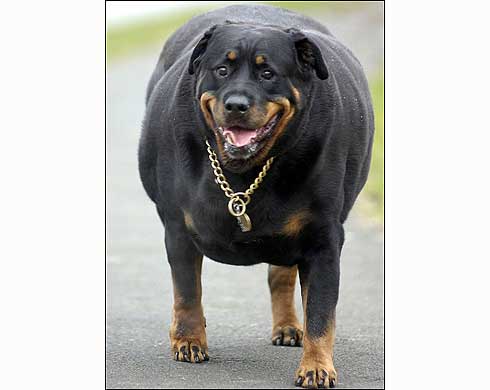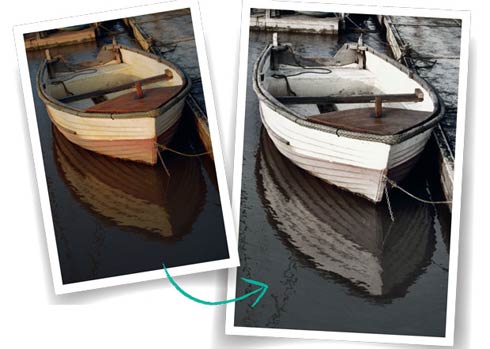Great Bokeh Photography – It’s All About the Background!
April 30, 2012
What is Bokeh?
In photography bokeh is defined as the blur in the out-of-focus areas of an image. These can be either good or bad aesthetically. Bad, especially if they are distracting. The Fab Web has a great selection of photographs that exhibit ‘good’ bokeh.
Selective focus can enhance your photography. A shallow depth of field is one requirement. There are also filters that can change the shape or appearance of the bokeh in an image, as you’ll see in these examples.
Americans and their Social Media: Infographic
April 29, 2012
I remain a skeptic about the true value of Social Media to their many users. Collecting all that personal data about us is quite valuable to the Dark Overlords of the Interwebs – I’m looking at you, Mr. Zuckerburg – and, obviously, governments.
It seems to me that a week doesn’t go by without news of someone losing a job, alienating friends, getting caught for criminal activity, or wrecking a marriage or relationship by ‘over sharing’ on Facebook. It also seems just plain sad that so many people have redefined ‘social’ as typing on their keyboards, instead of actually going out of their homes and interacting in the ‘real world.’
Didn’t the Grateful Dead sum this problem up in their November 1970 release, “Truckin'” ?
Most of the cats that you meet on the street speak of true love,
Most of the time they’re sitting and cryin’ at home.
One of these days you know they better get goin’
Out of the door and down on the streets all alone.
Then again, I think most television is an absolute waste of time and – Good Lord! – we Americans seem to spend a third of our lives watching TV. Here’s an infographic that details American usage of Social Media platforms. I’m appalled but your reaction may be different. . .
Click on image for larger size.
“Paying the Price of Having a Fat Pet” by Anahad O’Conner
April 26, 2012
It’s been known for some time that the human obesity epidemic in America has drifted, naturally, on down to our companion animals. What’s the harm? Anahad O’Conner lays it all out for you in “Paying the Price of Having a Fat Pet” in The New York Times.

“The problem in pets mirrors that in overweight humans, often stemming from lack of exercise and too many snacks and calorie-dense foods – or, in this case, treats and table scraps – between meals. For veterinarians, broaching the subject of an overweight cat or dog with owners can be a delicate task. Some respond defensively or see it as a reflection of their lack of exercise and struggles with the scale. Bringing it up with an owner requires just as much finesse as pointing out someone’s own weight gain.”
Martin Scorcese: 3D is the Future of Film Technology
April 26, 2012
As readers here know I’ve been shooting 3D still photographs (in one format or another) for almost 20 years. I’m also a fan of (well-done) 3D film.
Recently I’ve attended 3D film technical conferences where I’ve expressed skepticism that 3D film and TV will be the future of those mediums. Now one of the most accomplished and respected American filmmakers of all time, Martin Scorcese begs to differ with my opinion.

So I’m thinking, what the hell does he know? (No, not really). What I’m actually thinking is, hey, I may be wrong.
In his own words:
“There is something that 3-D gives to the picture that takes you into another land and you stay there and it’s a good place to be. . .It’s like seeing a moving sculpture of the actor and it’s almost like a combination of theater and film combined and it immerses you in the story more. I saw audiences care about the people more.”
DogTV in the New York Times
April 26, 2012
I wrote about DogTV previously. Now The New York Times weighs in, “Should Your Dog Be Watching TV?” by Douglas Quenqua. I believe the takeaway should be this quote from Dr. Ann E. Hohenhaus, staff veterinarian for the Animal Medical Center in Manhattan:
“I think a lot of this is to make us feel better as opposed to making the pet happier. Your pet needs adequate exercise and an interesting environment. You cannot just put on the TV and hope your dog is going to get better.”
Thank you, Dr. Hohenhaus for your intelligent assessment. We agree.
The Last Will and Testament of Silverdene Emblem O’Neill by Eugene O’Neill
April 21, 2012
I, SILVERDENE EMBLEM O’NEILL (familiarly known to my family, friends, and acquaintances as Blemie), because the burden of my years and infirmities is heavy upon me, and I realize the end of my life is near, do hereby bury my last will and testament in the mind of my Master. He will not know it is there until after I am dead. Then, remembering me in his loneliness, he will suddenly know of this testament, and I ask him then to inscribe it as a memorial to me.
I have little in the way of material things to leave. Dogs are wiser than men. They do not set great store upon things. They do not waste their days hoarding property. They do not ruin their sleep worrying about how to keep the objects they have, and to obtain the objects they have not. There is nothing of value I have to bequeath except my love and my faith. These I leave to all those who have loved me, to my Master and Mistress, who I know will mourn me most, to Freeman who has been so good to me, to Cyn and Roy and Willie and Naomi and – But if I should list all those who have loved me, it would force my Master to write a book. Perhaps it is vain of me to boast when I am so near death, which returns all beasts and vanities to dust, but I have always been an extremely lovable dog.
I ask my Master and Mistress to remember me always, but not to grieve for me too long. In my life I have tried to be a comfort to them in time of sorrow, and a reason for added joy in their happiness. It is painful for me to think that even in death I should cause them pain. Let them remember that while no dog has ever had a happier life (and this I owe to their love and care for me), now that I have grown blind and deaf and lame, and even my sense of smell fails me so that a rabbit could be right under my nose and I might not know, my pride has sunk to a sick, bewildered humiliation. I feel life is taunting me with having over-lingered my welcome. It is time I said good-bye, before I become too sick a burden on myself and on those who love me. It will be sorrow to leave them, but not a sorrow to die. Dogs do not fear death as men do. We accept it as part of life, not as something alien and terrible which destroys life. What may come after death, who knows? I would like to believe with those of my fellow Dalmatians who are devout Mohammedans, that there is a Paradise where one is always young and full-bladdered; where all the day one dillies and dallies with an amorous multitude of houris, beautifully spotted; where jack rabbits that run fast but not too fast (like the houris) are as the sands of the desert; where each blissful hour is mealtime; where in long evenings there are a million fireplaces with logs forever burning, and one curls oneself up and blinks into the flames and nods and dreams, remembering the old brave days on earth, and the love of one’s Master and Mistress.
I am afraid this is too much for even such a dog as I am to expect. But peace, at least, is certain. Peace and long rest for weary old heart and head and limbs, and eternal sleep in the earth I have loved so well. Perhaps, after all, this is best.
One last request I earnestly make. I have heard my Mistress say, “When Blemie dies we must never have another dog. I love him so much I could never love another one.” Now I would ask her, for love of me, to have another. It would be a poor tribute to my memory never to have a dog again. What I would like to feel is that, having once had me in the family, now she cannot live without a dog! I have never had a narrow jealous spirit. I have always held that most dogs are good (and one cat, the black one I have permitted to share the living room rug during the evenings, whose affection I have tolerated in a kindly spirit, and in rare sentimental moods, even reciprocated a trifle). Some dogs, of course, are better than others. Dalmatians, naturally, as everyone knows, are best. So I suggest a Dalmatian as my successor. He can hardly be as well bred or as well mannered or as distinguished and handsome as I was in my prime. My Master and Mistress must not ask the impossible. But he will do his best, I am sure, and even his inevitable defects will help by comparison to keep my memory green. To him I bequeath my collar and leash and my overcoat and raincoat, made to order in 1929 at Hermes in Paris. He can never wear them with the distinction I did, walking around the Place Vendôme, or later along Park Avenue, all eyes fixed on me in admiration; but again I am sure he will do his utmost not to appear a mere gauche provincial dog. Here on the ranch, he may prove himself quite worthy of comparison, in some respects. He will, I presume, come closer to jack rabbits than I have been able to in recent years. And for all his faults, I hereby wish him the happiness I know will be his in my old home.
One last word of farewell, Dear Master and Mistress. Whenever you visit my grave, say to yourselves with regret but also with happiness in your hearts at the remembrance of my long happy life with you: “Here lies one who loved us and whom we loved.” No matter how deep my sleep I shall hear you, and not all the power of death can keep my spirit from wagging a grateful tail.
Tao House, December 17th, 1940
Great Advances in Veterinary Medicine, But What About the Costs?
April 21, 2012
The New York Times has an excellent piece on new life-saving medical treatments for dogs. You’ll read about Tina, a 10-year-old chow owned by Mike Otworth that was one of the first dogs ever to receive a bone-marrow transplant. The procedure is detailed and makes for fascinating reading (using equipment donated by the Mayo Clinic).
Then there is the price Mr. Otworth paid: $25,000 in total.
No one can argue against the money that was spent to save Tina. That’s a personal choice to be made by each dog owner. But it does raise some troubling questions.
What is the extra time with a companion animal worth? To you and for the dog? Are there some procedures that shouldn’t be performed on aging dogs in the calculation of time gained versus the pain of the operation and recovery time?
In my opinion the last great gift you can give your dog is an easy passage from this life.
The enormous amount of money that’s spent on end of life care for humans doesn’t make sense to me, unless it delivers a good ‘quality of life’ for the patient. All too often, I see elderly people kept alive by medical technology today who, 30 years ago, would’ve died. Their quality of life is terrible. No relatively healthy person would trade places with them. So why artificially extend their suffering?
Does this make me a heartless beast who would ‘pull the plug on Grandma?’ Sure. (I never liked Grandma anyway).
There are two factors that drive this: insurance that covers these expensive treatments and guilt over not doing everything humanly possible for a loved one. We are rushing towards the day when the insurance part of this equation will break down and heroic intervention is simply no longer affordable.
It now looks like we will be facing similar hard choices when it comes to our dogs.
Photographer Chris Kotsiopoulos: One 24 Hour Day in 360° Panorama
April 21, 2012
OK, there are a lot of great, creative, inventive photographers out there these days. With the rise of digital photography and cameras part of everyone’s cell phones and tablet computers it’s easy to conclude that there are more images being captured today than at any other time in history. And so the competition to make memorable photographs is equally great.
Now here is a fascinating idea, executed superbly: capturing one 24 hour day in a 360° panorama image.
The photographer is Chris Kotsiopoulos and for an explanation of exactly how he achieved this go to his website, here. I think this is simply amazing. Click on image for larger size.
How to Bleach Images in Photoshop from Mac|Life
April 21, 2012
The bleached out color effect is a popular one these days and you may have wondered exactly how this is achieved. This tutorial on the “bleach bypass process” by Rob Lawton from the Mac|Life website shows you how to do it in clear, easy to follow steps.
I’ve been a subscriber to their print magazine since it was called MacAddict and was the first American Mac-centric publication to include a CD-ROM with each issue back in 1996.
The editorial tone is far less fannish and insular these days and more accurately reflects the broad appeal of Apple products to the audience beyond the fanboys. They used to have an inane stick-figure mascot named Max and their reviews used to rate software and products from “Blech” to “Freakin’ Awesome.”
At that time it always seemed to me a mash-up of skate-board kulture and computing. Adults would hide their copies behind an issue of the more mainstream and respectable MacWorld (where New York Times tech columnsit David Pogue got his start).
Today no one needs to hide their copies of Mac|Life; it’s been one of the most successful re-brandings of a print publication in this new century, IMO.
Why Do Dogs Love to Stick their Heads Out of Car Windows?
April 21, 2012
Anyone familiar with the canine nose already knows the answer to this one. It’s not the sights or sounds, it’s the smells.

On average a dog has more than 220 million olfactory receptors compared to the 5 million or so that humans have. They’ve also got something else we don’t have: a chamber called the vomeronasal organ. When a dog sniffs odor molecules accumulate in another unique structure, a sort of nasal pocket created by a bony subethmoidal shelf. This is the structure that allows dogs to compare a scent and then track it.
Their noses are far more acute than their eyes; the opposite is true for humans. So for a dog the appeal of having the air rush through their noses at the speed of a car is a sensory smörgåsbord of every smell in the area, constantly refreshed with new scents as the terrain changes. It’s stimulating to them in a way that is hard to compare to a human’s ability to sense and appreciate pleasant smells.
So, within reason, this is a pleasure you shouldn’t deny your pooch. I don’t allow it on highways, for example, but cruising around town on local roads I’ll always lower a window for my dogs, even in the bitter cold of winter.




